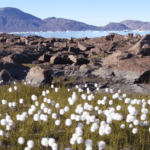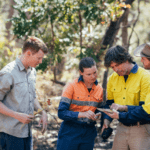If you’ve trained as a scientist, you know that part of the learning curve involves figuring out how to write a scientific paper. Unfortunately, few scientists receive explicit instruction in writing papers—researchers by definition are expected to know how to write.
When you’re a grad student, your supervisor is there to guide you through the paper publication process, as it’s in their best interests to have you publish the outcome of your research with them. Once you become an independent scientist, however—whether that’s in academia, industry, or at an NGO—writing research papers can be a frustrating and lonely experience.
There are many online resources and excellent books designed to provide writing advice to scientists. The difficulty as an early career researcher lies in making the time to learn how to write a good paper while also teaching yourself R stats and maybe a bit of Bayesian statistical methods, coming up with new pedagogical approaches to engage your students—or figuring out how to manage a work team, applying for a shrinking pot of grant funds, starting up a lab orgetting familiar with a new job.
This post distills the process of writing a paper into the key steps, and provides links to additional resources available. The goal is to give you a good head start on writing your next scientific paper, while providing specific places to find more detailed advice.
Before You Start Writing
The key to writing a successful research article begins well before you even put pen to paper.
While you’re doing background reading about your research area, it can be useful to save journal articles in a reference management system such as Mendeley, Zotero, or Endnote. This will help you keep track of all the papers related to your research, and make it a lot easier to create reference lists for future research papers. Secondly, you want to ensure that the design of your research project includes a well-defined research goal and series of objectives, as this forms the foundation of your research paper. Thirdly, a good paper requires that you maintain excellent notes of the materials you used and the methods you applied to answer your research question, so that readers can replicate your experiment if they so choose. Finally, many scientists suggest that you only start writing once you’ve completed all of your analysis, and have created a series of key plots and tables that best support your research goal and objectives. This will give you a strong narrative to follow in outlining your results and developing your discussion.
Once you have these aspects together, you should be ready to sit down and write.
Research Paper Structure
A typical research paper is divided into nine sections: Title, Abstract, Introduction, Materials & Methods, Results, Discussion, Conclusion, Acknowledgements, and References. If you do fieldwork, you may have an additional Study Site section between the Introduction and Materials & Methods sections.
Title & Abstract
Scientists read the title and abstract to decide whether or not they will delve into an entire paper—so you want to make sure to grab them right away! The key is to write these after the paper is completed. That way you can come up with a catchy title, and structure the abstract as a mini-paper, with the research question and context, the key results and the new things those results tell us, how it compares with other research, and a conclusion for further work.
Introduction
This section is all about placing your work into the broader research context, and then narrowing your focus to identify specifically what you plan to do in the paper: i.e., your research goals and objectives.
Materials & Methods
You want to provide enough detail that someone else could replicate the study if need be, and outline your rationale for that approach. Lay out what you did step by step, from the beginning to end of your experiment. Include not only how and why you collected data, but also how and why you applied specific analysis techniques. It can sometimes be hard to determine how much information is too much information; a good piece of advice is to put in more than you need, as you can always pare it down later.
Results
As Ivan Valiela says in his book, Doing Science, this section tells the reader “the facts revealed by your work.” For example, a colleague is currently working on a paper that includes these subheadings in the Methods section: experimental design, logging history, environmental monitoring, and data analysis. The results section outlines observed weather and snowpack conditions (based on the environmental monitoring), and describes changes in streamflow with logging quantified by applying specific data analyses to the streamflow data (part of the environmental monitoring), in relation to the specific experimental design.
Discussion
The discussion is where you pull your results together into a coherent story, and put that story in context by referring back to your own results and to other peoples’ research. By the end of the discussion, you should have addressed the goals and objectives you outlined in your introduction.
Conclusion
The conclusion ties up the paper by reiterating the research question, restating the significant results and the story they tell, and identifying any areas for further research.
Acknowledgements & References
Always be sure to recognize the contributions of others to your research, whether they’re assistants, funding agencies, or colleagues who helped you talk through different aspects of your work. As for the references—this is where the reference management system we talked about previously comes in, as it should make it relatively easy to create your reference list.
Other Tips
Don’t assume you have to write the paper in order from start to finish. You may find it easier—as many scientists do—to start with the Results section, referring to your tables and figures to explain what’s happening. Others may find it easier to start with the Methods section, writing out what they did and why. Still others may start with the Introduction, as it helps them mentally set the stage for what they need to write next.
Don’t wait for the perfect sentences to arrive in your mind before you start typing. Remember, everyone writes a crappy first draft, but it gives you something to work with on the path to writing your final paper.
I also recommend that scientists who struggle with writing—and even those who don’t—hire a professional scientific editor. While some researchers may think this is “cheating” or an admission of failure, it’s similar in scope to hiring yourself out as a consultant in a particular research field. You can hire an editors for anything from just proofreading, to improving overall paper structure, to working at the intermediate scale of improving paper wording and flow. Whatever services you need, there’s an editor out there who is trained to provide them.
Additional resources
Over on the LSE Impact Blog, Patrick Dunleavy explains why the title of your paper is so important—and gives advice on how to come up with the best title possible.
This post by Pat Thomson (also on the LSE Impact Blog focuses) specifically on writing an introduction. She reiterates the point above that a good introduction will make people want to keep reading your paper, and shows you how to get there.
This post over at Methods Blog provides an ‘Alternative Guide to Authors’ by detailing what you should include in each paper section. I particularly like their SUCCES acronym, which provides general principles of how to get your message across to the reader. The last S stands for ‘story’—just as we’ve described above.
Over on Dynamic Ecology, Brian McGill has an excellent post that goes beyond the standard paper outline to identify the five key paragraphs in a paper: the first and last paragraphs of the introduction, the first and last paragraphs of the discussion, and the abstract. If you’re having trouble getting the sections of your paper to flow together, McGill has some good advice for you.
If you’re having problems writing paragraphs, then this post from Writing For Research is for you. They talk about the six things that usually go wrong in writing paragraphs—such as starting with a reference to another paper, or writing paragraphs that are too short or too long. Luckily, they also provide advice on how to fix these problems.
Doing Science, by Ivan Valiela, has an excellent chapter on Communicating Scientific Information: The Scientific Paper. He advocates for starting with the Results section when writing a paper, and provides prudent advice on dealing with all other paper sections.
Just this month, Canadian scientist (and FACETS editorial board member!) Stephen Heard released The Scientist’s Guide to Writing—loads of great writing advice for both new and experienced scientists. Watch this blog for an upcoming book review!
Finally, if you’re trying to figure out how best to visualize your results, I recommend any book by Edward Tufte (e.g., The Visual Display of Quantitative Information, or Envisioning Information). He’s a master of data visualization, and can help you come up with new ways to show your data that make writing the Results section a breeze.




